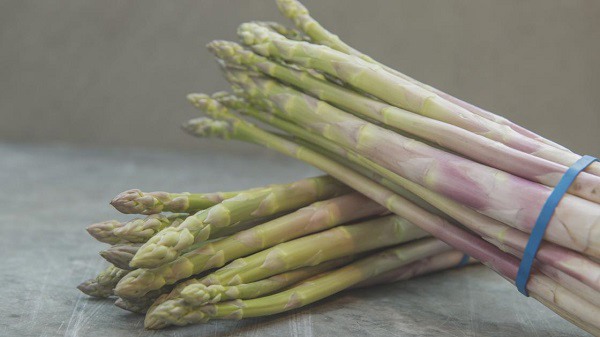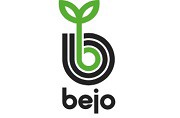When we think of asparagus, we often think primarily of the classic white or green asparagus. However, Günter Hugenberg from Bejo Samen Ltd told us how diverse asparagus can be. "In the early segment, our Prius has become an extremely successful variety. The variety starts very early and has a good volume start. In the later segment, Cygnus has again established a firm place for itself." Although there are slightly different regional demands on the product, for example with regard to the ideal stem diameter, this has only a minor influence on the choice of variety, says the asparagus expert.
Günter Hugenberg and Ria Duensing at the 6th Organic Vegetables and Potatoes Forum in Visselhövede.
Tricolore as food for thought for the asparagus market
For several years, Bejo Samen has also been encouraging asparagus to be harvested in three colors. For Tricolore, as the concept is called, the Cumulus variety is particularly recommended. "The Tricolore idea has and should provide food for thought for the asparagus market and is still providing impetus to move closer to what consumers actually want," Hugenberg says. "The market is opening up toward green and color. The offer has to go with it in order not to leave interesting segments unused. I see tricolore as a general trend today; after all, tricolored is also a very natural expression."
For Easter, he said he expects a decent amount of asparagus, although there are certainly significant regional and farm differences. "More areas are going out of production recently, with fewer being replanted. Weakening plants are no longer tolerable. Today, less than ever. The high demand for new plant performance opens the door for our varieties."

Photo: Bejo Samen Ltd.
Increased demand for green asparagus
In general, Hugenberg observes that production is again being optimized and made more efficient, especially to reduce wage pressure. "On the marketing side, we see increased demand for green asparagus, which may not necessarily be anthocyanin-free in the future. Here, growers' supply may need to follow changing consumer demand even more in the future."
He does not suspect a fundamental shift in the asparagus season due to climatic conditions, but he does know that asparagus cultivation will become more complicated. "Promising cultivation is actually already complicated by lack of water and heat. That, in turn, presents a challenge to the cultivars of the future." In terms of organic production, there are currently no suppliers offering organic asparagus seed, he said. "Just under ten percent of German acreage is farmed organically. We are just as present on these as on the conventional sector."
In turn, with regard to increasing competition from abroad, Hugenberg says: "German asparagus will retain its unique selling points and may even be able to strengthen them in the future." With appropriate advertising campaigns this year, he adds, this will also be pushed.
For more information: Günter Hugenberg
Günter Hugenberg
Bejo Samen GmbH
Danziger Straße 29
47665 Sonsbeck
Tel.: +49 172 2613001
Mail: guenter.hugenberg@bejosamen.de
Web: www.bejosamen.de

